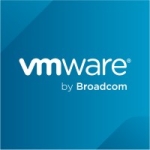We use it for event-driven messaging and workflows.
We use SNS as the publisher, and our procurement service subscribes to those events using SQS.
In the past, we relied on time-based or batch-based processes to send data between services on-premises. With SQS, we can trigger actions based on real-time changes in business processes, improving reliability.
Moreover, SQS can grow with our needs.
SQS message delay feature and redundant retention policies helped us to avoid replaying events due to errors and ensure our messages are processed reliably.
We use CloudWatch for monitoring.
It's easy to implement and cost-effective.
The visibility timeout feature is very nice. We use the visibility timeout in our internal processes to ensure that if a message fails to process, it becomes available for other consumers after a set period.
The current visibility timeout of five minutes is okay. However, I'd like to explore the possibility of extending it for specific use cases.
I have been using it for five to six years now. We (my company) use SQS quite extensively, and it has been quite a good service till now.
It is a scalable product. We can handle 10,000 events easily.
We have a lot of end users using it in my company. We have around 2,000 end users using it. We have multiple locations.
The initial setup is very straightforward. It's a simple checkbox-kinda process.
It is not difficult to maintain it. It is very easy. Overall, it is a very straightforward solution.
It does a very good job. The cost was the main issue for us.
It's a great solution. I would recommend using it.
Overall, I would rate the solution a nine out of ten. I've used it, and it seems to be a solid solution.


















